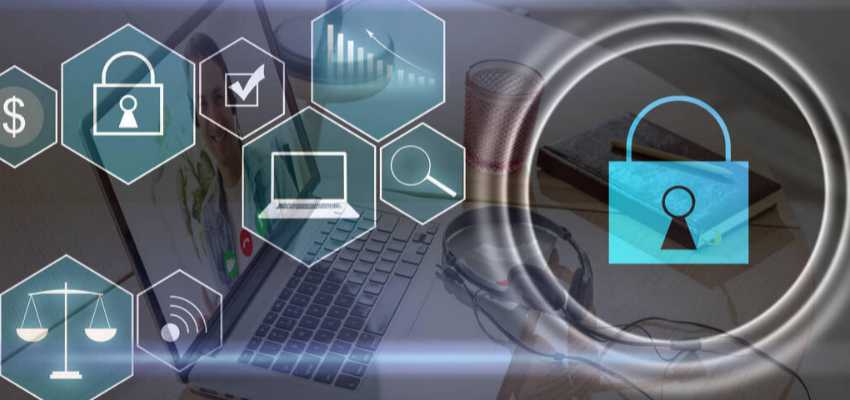Show:
A Beginner’s Guide to Managed Endpoint Security
Cyber threats are growing faster than ever. Businesses, big or small, face risks like ransomware and data breaches daily. Your endpoints—laptops, phones, and servers—are often the easiest targets for attackers. Without proper protection, your digital assets could be at serious risk.
Managed endpoint security offers an effective answer to this problem. Studies show that well-managed endpoint protection can reduce security incidents significantly. It helps monitor devices, detect threats early, and protect sensitive data from falling into the wrong hands.

This guide will explain everything step-by-step. From understanding key features to choosing the most effective solutions—it’s all covered here in straightforward terms anyone can grasp. Ready to protect those vulnerable spots? Keep reading!
What is Managed Endpoint Security?
Managed endpoint security protects devices like laptops, phones, and servers that connect to a network. It guards these access points against malware, ransomware, and data breaches. Managed service providers (MSPs) take care of security tasks for businesses. They monitor threats around the clock and apply protective measures, like the services provided by 7tech, which support secure device management across networks.
This solution combines tools such as threat detection software, firewalls, and vulnerability management protocols. It ensures all endpoints follow strict security policies to reduce risks. With managed endpoint protection in place, businesses can secure their digital assets while focusing on operations. Continue reading to learn about the key components of this effective defense system.
Key Components of Managed Endpoint Security
Strong endpoint security depends on multiple working parts. These tools keep threats at bay and protect your systems from harm.
Endpoint Detection and Response (EDR)
Endpoint Detection and Response (EDR) operates as a vigilant guard for your devices. It detects threats, logs activity, and reacts to attacks in real time. Through continuous monitoring, EDR tools identify suspicious behavior before it escalates into major breaches.
For instance, if ransomware attempts to encrypt your files, EDR intervenes to block it immediately.
“Advanced threats require quick action,” said cybersecurity experts at IBM. With EDR solutions, businesses receive automated alerts and detailed reports about potential risks. This enables IT teams to respond faster without spending hours sorting through data manually.
Effective threat detection safeguards networks while minimizing downtime caused by malware or hacking attempts.
Threat Intelligence Integration
Threat intelligence gathers current information about possible threats and weaknesses. It detects harmful activities such as phishing, ransomware, or malware aimed at your systems. With this insight, businesses can act more quickly to address changing dangers.
Managed endpoint security services incorporate threat intelligence to enhance protections. They examine attack patterns and prevent questionable actions before damage can happen. Some providers extend their offerings to include more comprehensive digital risk management, like the services by Vigilant, which specialize in integrating Oracle Cloud ERP with advanced cybersecurity frameworks. This forward-thinking strategy lowers the likelihood of breaches while safeguarding critical digital resources and networks.

Common Endpoint Security Threats
Cybercriminals aim for weak points in your network to exploit valuable data. Knowing the dangers lurking can save both time and money down the road.
Phishing Attacks
Phishing attacks deceive employees into revealing sensitive information. Hackers send fraudulent emails posing as trusted entities such as banks or service providers. These emails often prompt users to click harmful links or download dangerous attachments.
Once accessed, they steal passwords, financial data, or login credentials.
Small businesses consider phishing a significant security risk. A single successful attempt can expose networks and jeopardize digital assets. “One bad email can lead to extensive damage.” Educating teams to identify warning signs like suspicious links helps minimize risks.
Ransomware
Cybercriminals often use ransomware to block businesses from accessing their data. This type of malware encodes files and demands payment, usually in cryptocurrency, for access.
It can infiltrate through phishing emails or weaknesses in outdated software. Once activated, it spreads rapidly across networks.
Small businesses are key targets since they sometimes lack effective cybersecurity measures. Paying a ransom doesn’t ensure file recovery either; attackers may deny access or strike again later.
Regular data backups and strong endpoint protection minimize the risks of lasting damage caused by these attacks.
Data Breaches
Ransomware can restrict access to data, but breaches escalate the issue by involving theft. Threat actors take advantage of weaknesses to gain access to sensitive digital information such as customer details or intellectual property.
These events leave businesses vulnerable to financial loss and reputational harm.
Human error often contributes significantly to breaches. Poor password choices, improperly managed credentials, or phishing emails create easy opportunities for attackers. Effective security policies and consistent employee training are essential to prevention efforts.

Best Practices for Managed Endpoint Security
Protecting endpoints begins with smart habits and strong defenses, so let’s break it down step by step.
Regular Software Updates
Hackers often take advantage of outdated software to initiate attacks. Keeping your systems updated lessens vulnerabilities. Each update enhances security measures and fixes existing issues, making it more difficult for cybercriminals to take advantage of weaknesses.
Software updates not only introduce new features but also reinforce defenses against growing threats like ransomware and malware. Automated updates save time and minimize human mistakes, ensuring consistent protection for endpoints across networks.
Overlooking these updates leaves digital assets unnecessarily exposed to risk.
Multi-Factor Authentication (MFA)
Multi-Factor Authentication (MFA) adds a layer of security by requiring users to verify their identity through more than one method. Instead of just entering a password, employees might also need to input a code sent to their mobile device or scan a fingerprint.
This makes it much harder for cybercriminals to access accounts, even if they steal login credentials.
Businesses can implement MFA to enhance network protection and reduce data breaches. For example, pairing traditional passwords with biometric scans or physical security keys limits unauthorized access points.
By combining MFA with existing endpoint protection solutions, companies can protect sensitive digital assets without unnecessarily complicating workflows.
Choosing the Right Managed Endpoint Security Solution
Pick a solution that fits your needs and grows with your business—your security depends on it.
Key Factors to Consider
Choosing the right endpoint security solution protects digital assets and reduces cybersecurity threats. Business owners must weigh several factors to guard access points effectively.
- Compatibility with Existing Systems
A solution should align with your current network infrastructure. Incompatibility can create security gaps or slow performance. - Ease of Management
Complex tools waste time and resources. Simplified unified endpoint management saves effort and ensures smooth operations. - Expansion Options
Not all businesses stay the same size forever. A flexible system grows with your needs without added disruption or expense. - Thorough Malware Protection
Attackers always evolve their methods. The chosen product must focus on malware detection, ransomware protection, and data breach prevention. - Threat Detection Speed
Rapid response reduces damage caused by potential vulnerabilities or active threats. Modern security systems should identify risks in real-time. - Integration with MSP Security Services
If using managed IT services, confirm compatibility with the provider’s offerings. Many organizations hire CloudSecureTech to streamline endpoint security and ensure that all systems work seamlessly with existing infrastructure. Combined efforts enhance network protection efficiency. - Support for Mobile Device Security
Remote work increases access points in networks. Prioritize solutions that secure smartphones, tablets, and laptops equally well. - Proven Track Record
Past performance speaks volumes about reliability. Look for customer feedback highlighting consistent threat mitigation success rates. - Cost-Effectiveness Without Sacrificing Quality
Effective protection doesn’t demand overspending budgets, but cutting corners may lead to breaches or data losses down the road. - Compliance Readiness Across Industries
Meeting regulatory standards avoids fines and builds trust among clients or partners relying on secure transactions daily.
Importance of Scalability
Expanding managed endpoint security safeguards businesses as they grow. A small team may begin with basic tools, but growth requires solutions that can handle more endpoints without faltering.
Adding users or devices can stress systems if the infrastructure isn’t adaptable. Flexible options adjust to demand, whether managing ten laptops or hundreds of mobile phones.
Growth often brings new risks like cyberattacks targeting larger networks. Fixed systems have difficulty keeping up with these threats, leaving protection gaps. Adaptable security ensures your defenses remain robust during periods of growth or technological updates.
Business owners avoid expensive overhauls and minimize exposure to vulnerabilities by planning for growth from the start.
Conclusion
Protecting your devices doesn’t have to feel overwhelming. Managed endpoint security makes the process easier while safeguarding critical data. Stick to strong practices, like updates and multi-factor authentication, to reduce risks. Choose a solution that fits your business needs for stronger protection. Stay vigilant and keep threats at bay!

 Return to Previous Page
Return to Previous Page








